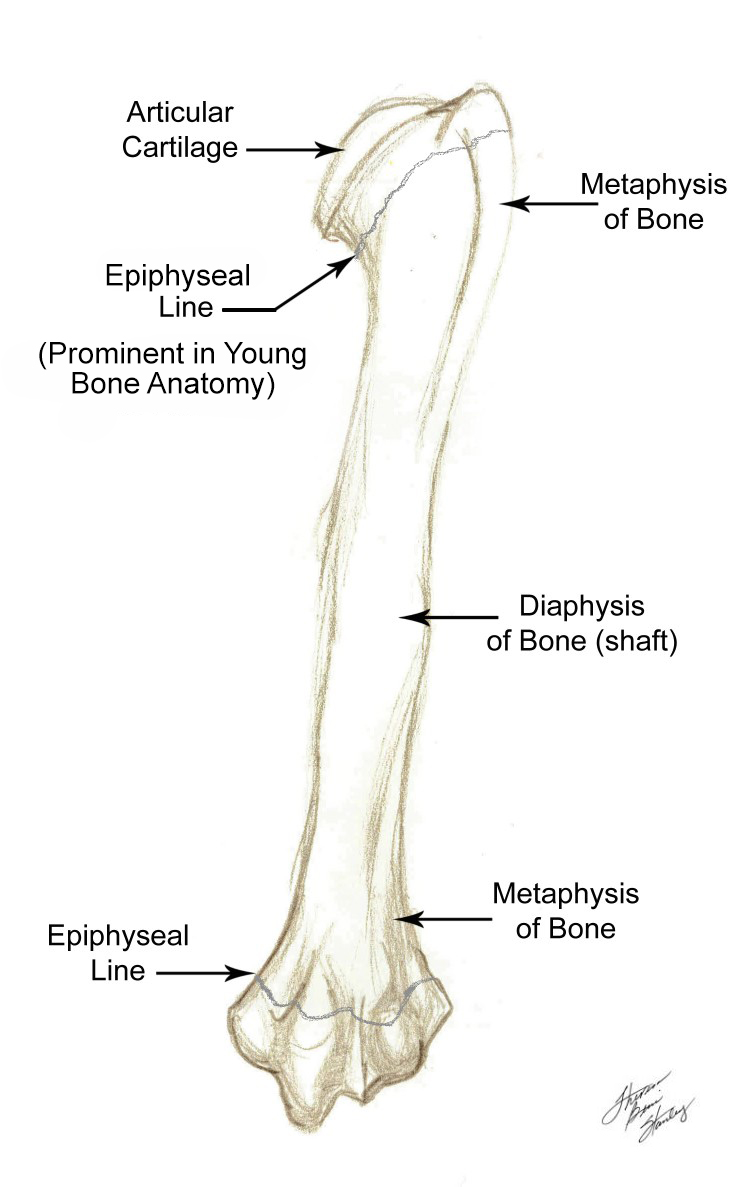The long bones comprise a large group of bones including the– humerus ,clavicle, radius, ulna, metacarpals, phalanges of feet and hands, femur, tibia, fibula, metatarsals. The common landmarks and anatomic parts of the adult long bones are shown in Illustration 41 below.
A common challenge in your practice of medicine will be to evaluate the patients with trauma to the long bones. This Module will begin the discussion of trauma to the Long Bones with the goal of determining whether a fracture is present, describe the fracture often with the end result of presenting to a receiving practitioner ( often an orthopedic surgeon ). In doing so we may discuss a treatment plan.
Illustration 41 Adult Long Bones Anatomy

